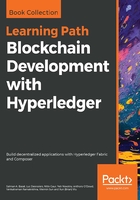
Ensuring sustainability
Blockchain-based business networks are continuing to evolve and grow, and as they do, there will be no turning back on core issues such as trust models, data visibility, and exploiting a network for competitive advantage.
Focusing on sustainability can seem paradoxical because it promotes open collaborative innovation while at the same time locking down constructs such as consensus or trust systems and the governance systems for managing assets, smart contracts, and overall interaction in a multiparty transaction network. Blockchain system design needs to take all of this under consideration.
A business network with a successful system design needs to align well with the blockchain tenets of trade, trust, ownership, and transactionality in a multi-party scenario. Without building on these core tenets, business networks may not realize the promise of blockchain technology in a sustainable way.
Here are seven design principles to support and sustain growth in a blockchain business network:
- The network participants need to have control of their business
- The network has to be extensible, so that participants have flexibility to join or leave the network
- The network must be permissioned but also protected, to safeguard competitive data while facilitating peer-to-peer transactions
- The network should allow open access and global collaboration for shared innovation
- The network must be scalable for both transaction processing and encrypted data processing
- The network has to be able to accommodate enterprise security and address new security challenges
- The network needs to coexist with established systems of record and transaction systems in the enterprise
We will list the design principles graphically as follows:
